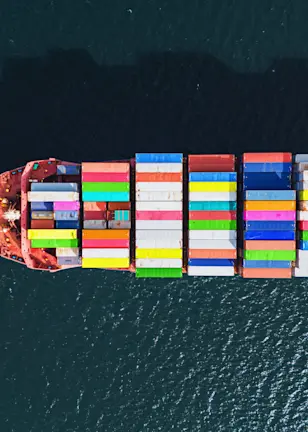To fill this gap, and to ensure meaningful progress with its sustainability ambitions, Robeco developed its own methodology, the Robeco SDG Framework.
The methodology is based on the UN Sustainable Development Goals (SDGs) – which represent a comprehensive set of universally adopted ambitions – and is a clear, consistent and replicable approach for assessing a company’s contributions to the SDGs.
A three-step sequence
It consists of a three-step sequence that starts by assessing the impact of a company’s products and services on broader society. This is followed by an investigation of the company’s operations, and then a screening of controversies that could negatively influence the SDGs.
The final results of this three-step analysis are quantified in an SDG score. Positive-impact companies can receive an SDG score of +1 to +3 (lowest to highest) depending on the strength and quality of their contributions to the SDGs. Similarly, negative-impact companies receive SDG scores of -1 down to -3 (the worst), depending on the extent to which they detract from the SDGs.
Robeco has a range of fundamental SDG-related fixed income strategies that use the SDG Framework to determine their investment universe. Strategies with the strongest sustainability profile invest only in bonds with an SDG score of zero or higher, while other strategies can also allocate a limited proportion of the portfolio to issuers with an SDG score of -1 and that are considered to be in transition.
In addition to being applied to these SDG-related credit strategies, Robeco’s SDG Framework is also employed in the fundamental credit reports described in the chapter on the ESG integration framework. These reports form part of the input for the issuer selection process for all Robeco’s credit strategies. This reflects the view that companies producing unsustainable products and services could face additional and financially material risks, which in turn could pose risks for credit investors.
“Empirical evidence supports our view that screening credit holdings for their SDG impact and sustainability characteristics is positive for performance in the sense that it enhances our ability to screen out poor performers – without impeding our capacity to generate alpha through issuer selection,” says Rachel Whittaker, Head of SI Research at Robeco.
A novel approach
Jan Anton van Zanten, SDG Strategist at Robeco, considers the methodology to be unique. “I think the importance of the framework is that it is novel. A lot of sustainable investors still focus mainly on avoiding ESG risks, while very few are truly targeting companies with positive impact. And I think our SDG Framework is innovative in that it is an absolute framework that judges companies based on their contributions to the SDGs.”
Reinout Schapers, who is a portfolio manager for, among others, RobecoSAM Global SDG Credits, says the framework positions investors to raise the bar on sustainability, year after year. “For our SDG-focused credit strategies, the set-up is such that you are setting a minimum standard and continuously progressing toward something even better.”
Even for strategies that do not invest with an explicit goal of contributing to the SDGs, the framework helps create better outcomes. According to Schapers, it means he and his colleagues are better informed about companies’ longevity and resilience because they gain insight into which businesses or industries have outdated business models or are vulnerable to being left with stranded assets, for example. “In fact, I believe that as investors we are developing the discipline of adopting a much longer time horizon.”
With expanding regulatory oversight to ensure that investors can substantiate sustainability-related claims, the transparency and replicability of the SDG Framework are especially relevant features.
The EU Sustainable Finance Disclosure Regulation (SFDR), for instance, requires asset managers marketing investment solutions in the EU to provide comprehensive sustainability disclosure. “The SDG Framework is a very good tool for aligning with this important requirement, in that we can conclude that a company with a positive SDG score could be considered a sustainable investment,” Schapers says. The same could apply to the UK’s forthcoming Sustainability Disclosure Requirements (SDR) regulation.
Quantifying the contribution to the SDGs
Robeco has continued to develop the application of the SDG Framework, which goes beyond generating an SDG score. “While the SDG score is of course a very good indication of the expected positive impact of an issuer, there is tremendous value in being able to quantify that impact, and in particular the impact that a client’s capital is supporting,” Van Zanten says.
For instance, a pharmaceutical company could receive an SDG score of +2, indicating it has medium positive impact, thanks to the fact that it manufactures adequate and safe medicines that help reduce mortality and morbidity. Only by quantifying the outputs and outcomes that investee companies provide, can the real-world effects of a particular investment be evaluated.
To this end, the Robeco SDG team developed a framework through which companies’ contributions to relevant SDGs are captured in a concise, consistent and comparable manner. It generates metrics that are linked to official SDG targets and indicators. Paul Ruijs, Impact Specialist at Robeco, explains that for holdings with a positive SDG score, the overall contribution to these targets and indicators is quantified. Examples include gigawatts of clean energy generated by the company, cubic meters of clean drinking water distributed, or the value, in billions of euros, of mortgage financing provided to low and middle-income households.
“And based on our approximation of the total impact that a company has, we then attribute a portion of this impact to our investment, depending on the proportion of the issuer’s outstanding capital that we are financing.”
The ultimate objective of these metrics is to illustrate to clients why portfolios are invested the way they are, to further the education process, and therefore to help drive the momentum on sustainable investing.
Van Zanten concludes that, if you claim to be a sustainable investor, you need to invest in things that are good for the world. “To do that, you need a metric and a sound methodology. I believe we were one of the first to create a metric that measures sustainable impact. And that’s clearly a positive development for our clients.”
This is an extract from a longer publication:
最新のインサイトを受け取る
投資に関する最新情報や専門家の分析を盛り込んだニュースレター(英文)を定期的にお届けします。
重要事項
当資料は情報提供を目的として、Robeco Institutional Asset Management B.V.が作成した英文資料、もしくはその英文資料をロベコ・ジャパン株式会社が翻訳したものです。資料中の個別の金融商品の売買の勧誘や推奨等を目的とするものではありません。記載された情報は十分信頼できるものであると考えておりますが、その正確性、完全性を保証するものではありません。意見や見通しはあくまで作成日における弊社の判断に基づくものであり、今後予告なしに変更されることがあります。運用状況、市場動向、意見等は、過去の一時点あるいは過去の一定期間についてのものであり、過去の実績は将来の運用成果を保証または示唆するものではありません。また、記載された投資方針・戦略等は全ての投資家の皆様に適合するとは限りません。当資料は法律、税務、会計面での助言の提供を意図するものではありません。 ご契約に際しては、必要に応じ専門家にご相談の上、最終的なご判断はお客様ご自身でなさるようお願い致します。 運用を行う資産の評価額は、組入有価証券等の価格、金融市場の相場や金利等の変動、及び組入有価証券の発行体の財務状況による信用力等の影響を受けて変動します。また、外貨建資産に投資する場合は為替変動の影響も受けます。運用によって生じた損益は、全て投資家の皆様に帰属します。したがって投資元本や一定の運用成果が保証されているものではなく、投資元本を上回る損失を被ることがあります。弊社が行う金融商品取引業に係る手数料または報酬は、締結される契約の種類や契約資産額により異なるため、当資料において記載せず別途ご提示させて頂く場合があります。具体的な手数料または報酬の金額・計算方法につきましては弊社担当者へお問合せください。 当資料及び記載されている情報、商品に関する権利は弊社に帰属します。したがって、弊社の書面による同意なくしてその全部もしくは一部を複製またはその他の方法で配布することはご遠慮ください。 商号等: ロベコ・ジャパン株式会社 金融商品取引業者 関東財務局長(金商)第2780号 加入協会: 一般社団法人 日本投資顧問業協会


















